Shopify vs. Amazon: Make the Right Choice
- Shopify vs. Amazon - General Overviews and Major Differences
- Selling on Shopify vs Amazon - Seller Experience
- Shopify vs Amazon - Pros and Cons
- Shopify vs. Amazon - Templates and Customizability
- Which market is right for your business?
- Shopify vs. Amazon - Conclusion
As a merchant, you have probably heard a lot about two major e-commerce heavyweights - Shopify and Amazon. Both platforms can provide online sellers with tons of opportunities. The question here is, which one to choose?

On Amazon, there are more than 2 million sellers from all over the world. As for Shopify, the number of active merchants is over 1 million worldwide according to the latest data. These are impressive numbers, aren't they?
Even though you can run your business on both Amazon and Shopify, there are a number of important differences that might influence your choice. Before making a final decision considering which e-commerce platform to go with, take a closer look at our head-to-head comparison of Shopify vs. Amazon.
Attention Shopify Theme Makers!
Start selling your Shopify themes at the TemplateMonster marketplace. Enjoy author-driven pricing and high commissions. Get a share of up to 70% for exclusive items, and 40% for non-exclusive ones.
Shopify vs. Amazon - General Overviews and Major Differences
We have done in-depth research regarding both e-commerce platforms taking into account such factors as pricing, ease of use, level of customer support, set of possible features, etc.
So, you want to sell products and services online, but you are puzzling over the question of whether you should sell on Shopify or on marketplaces like Amazon or eBay.
First things first, you don’t necessarily have to pick only one platform. On the contrary, it is recommended to do both: you can have a Shopify online store and at the same time use Amazon fulfillment.
Moreover, it would be a mistake to assume that they are completely interchangeable. Let’s look at the Shopify-Amazon differences.
Shopify

Shopify is a complete cloud-based e-commerce platform with the help of which a merchant can set up, manage, and scale an e-commerce website or online store. It is a great solution for small startup businesses as well as for big companies. The number of customizable templates, the set of features and tools along with affordable pricing plans and tons of apps from the Shopify App Store make Shopify one of the leaders in the world of e-commerce.
Amazon
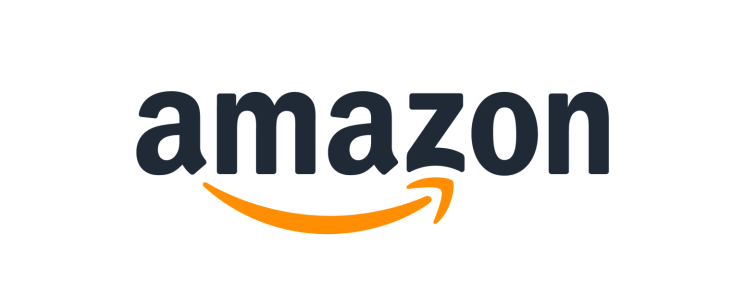
As you may already know, Amazon is the world’s best known and biggest online retailer that provides merchants with the opportunity to sell their goods and services through its marketplace.
The good news is, thanks to Amazon you get millions of potential customers instantaneously. The bad news is, these potential customers are the potential customers of your competitors as well. Normally people don't go on Amazon to look for a certain brand; they look for a particular product. Because of this, Amazon is a great solution if you own a small business and don't yet have an established customer base. However, you need to be ready to stick to plenty of rules and regulations if you go with Amazon.
So, the main difference between the Shopify e-commerce platform and the Amazon e-commerce platform is on the surface. With Shopify, you build and manage your own separate online store whereas Amazon allows you to sell things by the use of its marketplace side by side with other online merchants. In other words, setting up your Shopify store is similar to opening a standalone coffee shop on the city street while selling goods on Amazon is like opening the same coffee shop but inside the biggest mall alongside other coffee shops.
Selling on Shopify vs Amazon - Seller Experience
I started selling online in 2001 through the eBay marketplace. At first, I was looking to make a little extra cash by selling some of the things lying around my house that I no longer needed. This changes when my daughter was born with a medical condition that required me to stay home with her. At this point, earning an income online became a need.
Since then, I have been successfully dropshipping on various sites including Amazon and eBay. I’m also a freelance eCommerce consultant working from home and running my Youtube channel.
I love teaching others how to make money online and would like to share my experience selling on both Amazon and Shopify. In this guide, I will share my experience getting started with both platforms and give you an in-depth comparison so that you can know which is best for you.
How I started selling on Amazon
A friend of the family had a successful online store in the late 90s. However, she didn’t know how to sell on Amazon. I was dabbling in Amazon at the time and she asked if I would be willing to try and sell her products on Amazon.
As you know, I needed money for my baby so I happily agreed and that’s how I began selling on Amazon. The marketplace was still popular at the time but I had no idea that it would come to dominate the entire eCommerce market.
When I first began in 2003, there were essentially no tools to help sellers run their businesses. With limited options for finding products, I relied on a friend’s website to source my first products. When a customer placed an order on Amazon, I would order the items from my friend’s site and have them dropshipped to the customer.
However, she eventually retired and I was no longer able to use her store. So, I needed a new product supplier. This is when I started getting into learning more about other companies and other software.
After plenty of research, I found AMZScout and it has been a life-saver for my business! I was fearful before using them. Now, as the results show you, I’m confident in my decisions when I use the various tools to find products for my business.
How I research products
I have made a video on my YouTube channel detailing how I find products to sell on Amazon. Below is a brief overview of the steps I take:
- I start by setting filters in the AMZScout Product Database. This lets me search for product ideas based on specific criteria. I typically look for items in the $30 to $60 price range and with under 30 reviews.
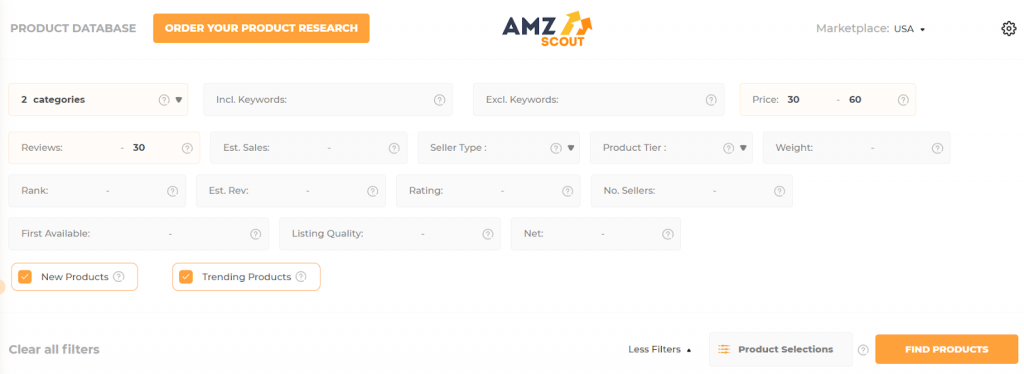
2. Next, I use the PRO extension to find profitable niches and to analyze the markets’ competition. When I find a promising niche, I will analyze its niche score, the average listing quality, and the product history which shows how sales are growing over time.
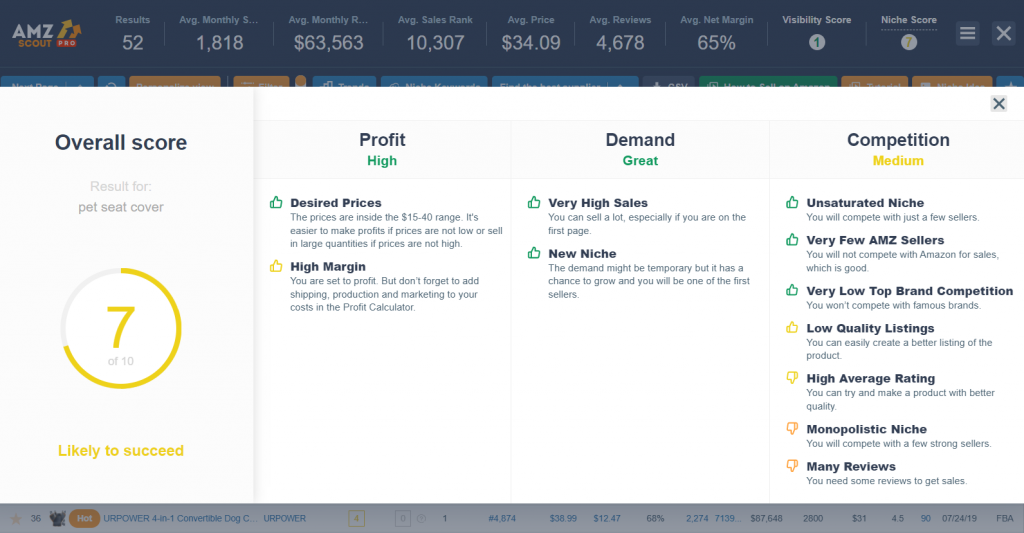
3. I then use the find a supplier feature to search for local and international suppliers on Alibaba and other sites. I will filter by country, price, currency, and minimum order quantity (MoQ) according to what I’m looking for with that particular item.
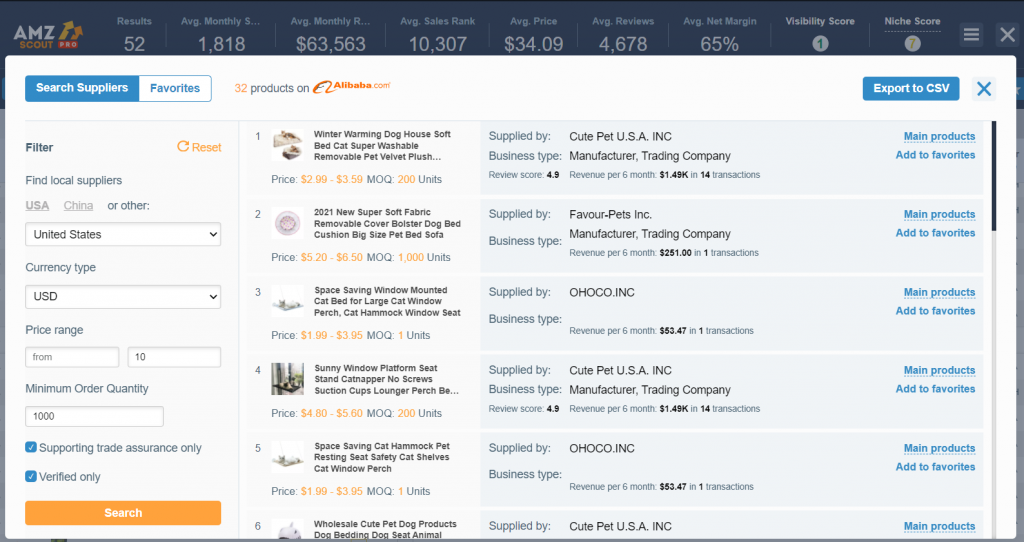
Once I mastered dropshipping and learned how to analyze product data, I then decided to begin using private label sourcing to get my products for Amazon.
Amazon Products
I tend not to stick to a single product category. I move between categories based on the research I find using AMZScout. I do, however, have a custom product that I produce with variations in the jewelry category.
Right now, I use a mix of Alibaba and some US-based manufacturers to procure my products. I have all my products shipped to me first. I do this because my products are one of a kind and I need to take pictures, edit them and upload everything from scratch.
Amazon has been my primary focus for some time. I have been able to maintain steady results and the market has long been my top online income stream. On average, I spend about 30 minutes per pay working on my Amazon business. While I enjoy the “hands-off” ability to sell on Amazon, I am always interested in trying something new which is why I chose to start using Shopify as well.
How I Started on Shopify
How I set up my store
Shopify is a very popular eCommerce platform and having learned of it, I began dabbling in it to see what it’s about. Then, Debutify contacted me to offer to help me learn the platform and to set up my store. So, I went with it and bought a domain name that went with my brand. Once I made the site, I let it run in the background, while I did other things.
What do I sell on Shopify?
I started with the items that I felt had the highest demand given my prior research. The tools helped me target some products that were selling on Amazon, so I thought it’d be a good idea to start selling them on my own site. With this approach, Amazon wasn’t taking a huge chunk out of what could be my own profit. I still sell everything that I started with.
I use Amazon as a starting point to help me find products for every platform that I use to sell. I do this because Amazon accounts for almost half of all eCommerce sales. It is also the first place the majority of shoppers go when looking for products. Even more so than Google!
With AMZScout, there are details and exact numbers that help you know whether a product will sell. I have back-checked these numbers with my personal results and they’re very similar, showing the software is accurate.
I am using a combination of Dropshipping, private label, and print-on-demand to get my Shopify items. I also have a combination of my own designs as well as manufactured ideas of my own.
How I market my Shopify products
To promote my Shopify products I ran a few Facebook ads. However, they weren’t effective in turning leads into sales. Now, I use a very minimal amount of Facebook Ads and do not launch any new campaigns. I am currently using auto-posting of products from my Shopify store to Facebook and other social media.
My results
In the first month after implementing the products I found through my research, my Shopify store earned $2,848 of income!

Shopify vs Amazon - Pros and Cons
Amazon Pros
1. Amazon handles logistics
The biggest advantage to selling on Amazon is the ability to leverage the eCommerce giant’s logistic capabilities. If you choose to use FBA to fulfill your orders, Amazon will store, pack, and ship your items for you. They will also handle any returns and customer service inquiries.
Logistics is often the most complex part of running a commerce business so getting this off your plate is huge when you want to start selling.
2. Built-in audience
With Amazon, you do not need to spend as much effort to get your products in front of customers. Millions of shoppers already go to Amazon each day to make purchases. This built-in audience enables you to start earning revenue faster.
3. Low maintenance
When you compare Shopify vs Amazon FBA, the latter allows you to run your business with much less effort. Now, that my Amazon business is up and running, I can maintain my profitable venture with less than an hour of work per day.
There are very few other online business models that provide this level of income earning potential with this little time commitment.
Amazon Cons
1. High Fees
All the benefits of selling on Amazon do not come without a cost. For each sale, you need to pay Amazon a commission. This will vary depending on the product category but is typically around 15%.
2. Listing a new product can be time-consuming
Getting your first products up on Amazon can take a little time. You need to learn what information is required for the type of item that you sell and then add it to the listing.
Furthermore, if you are selling your own private label product, you need to submit an application to get approval to list the item under your brand name. This will require you to provide a picture of the item with the brand name on the package or product. You can also complete the application by enrolling in Amazon’s Brand Registry.
3. Limited customer support
Amazon does its best to help sellers but their support is rather limited. It is difficult to get anyone on the phone or live chat. If you need support you will need to rely on slow support messages and emails.
4. Upfront advertising costs
While Amazon offers a massive audience, it is highly unlikely that you will be able to tap into it when you first start selling. Because of this, many sellers need to run paid ad campaigns in order to generate their first sales.
This is an effective marketing tactic, however, it requires additional capital as you will need to pay for the ads. Depending on the product you sell and the average cost per click (CPC) for related keywords, you may even end up spending more on advertising than you do to source your products.
5. Amazon SEO and Keyword Research
To get visitors to your products you will need to learn Amazon SEO and keyword research. Amazon SEO is similar to regular SEO but there is a difference between the two which will mean extra learning on your part.
Shopify Pros
1. Full control
When you sell on an eCommerce platform like Shopify you have full control over your business. You do not have to obey Amazon’s rules and you can design your site however you like. Plus, you do not have to pay commission fees for your sales.
2. Less information is needed to list products
On Shopify, you can provide as little or as much detail you want when listing your products. Amazon on the other hand has specific requirements for each type of product. There are also several hoops you need to jump through when initially listing an item from your brand.
3. Better selection of suppliers
Some suppliers do not permit resellers to list their items on marketplaces like Amazon, Etsy, and eBay. With your own eCommerce site, you can freely list products from any supplier.
4. Access to customer data
When you sell on Shopify you get complete access to your customer data. You can know who visits your site, what products they view, and how much they spend. As you build a database of customers you can create highly targeted remarketing campaigns to drive repeat sales.
With Amazon, you get a built-in audience but you do not get any insights into your customers.
Shopify Cons
1. You need to build the business on your own
With your own Shopify store, you can’t rely on Amazon’s network effect to bring you, customers. You need to build a quality business on your from scratch
2. Finding the best marketing tactics
As discussed it’s easier to market products on Amazon as many consumers already shop there and trust the market. With a Shopify site, you need to find ways to get potential customers to your webstore. Facebook Ads, Google Ads, and other marketing channels all have the potential to work but you will not know what is best for your business until you go through the process.
3. Building a website is more intensive than an Amazon listing
With Amazon, you simply need to add the details and images for your listings. The layout of the product page and the checkout flow is done for you.
On the other hand, a Shopify store requires you to design the entire eCommerce site. Shopify has many quality themes with attractive pre-designed templates but you will still need to customize the site your branding.
4. Lower conversions
On average, Amazon products convert at a much higher rate than those on independent eCommerce sites. In fact, the average conversion rate on Amazon is close to 10% while that of eComm sites hovers around 2% (depending on the niche).
When you are paying for ads this can make a massive difference in the profitability of your business.
Shopify vs. Amazon - Templates and Customizability

How many times have you left a website just because the design was so bad or confusing that you could hardly get to where the shopping cart was? Fortunately, both Shopify and Amazon web stores have attractive website designs and layouts to offer.
In terms of design customizability, Shopify is ahead of the race. Not only do you have complete control over your store design, but you can also choose from over 70 themes (10 of which are free of charge) and then make whatever changes you want to help your brand stand out. You might also like to check out the huge collection of Shopify themes here.
Even if you are looking for something very specific, say, a responsive template for your Furniture Shopify store, you will find it among the themes suggested.
Do you prefer having more than one string to your bow? Perhaps, this multipurpose editable Shopify Theme will fit the bill.
On Amazon, the page layouts all look pretty much the same. You can’t customize your product page the way you get to do with Shopify. Amazon caters to its brand; therefore, it is difficult for you to promote your own brand image. Indeed, there are things that can be customized with Amazon apart from uploading images and writing descriptions, but in the long run, Shopify offers way more design flexibility.
Which market is right for your business?
Selling on Amazon is easy once you get everything to them. However, this comes at the cost of a portion of your sales. For me, Shopify has been more challenging because it is new and I don’t know everything I need to know. But it’s also fun and very rewarding because all the profits are mine.
Shopify is definitely a little harder to market and bring in customers. If I had to advise someone that was starting out, I’d say start with Amazon because Amazon brings customers to you already.
However, in the long run, if you can get your store set up and know a little about marketing, the shift to Shopify can be rewarding and ultimately more profitable.
If you want to know our choice right up front, we consider Shopify to be the best all-in-one e-commerce platform out there. Chances are, you won't find anything better for setting up and scaling your online store website. However, it would be a mistake to claim that Shopify is right for everyone without exception. That's exactly when our research comes in handy. Find out in what ways Shopify is different from Amazon and decide which platform is better for your business.
Shopify vs. Amazon - Conclusion
Both Shopify and Amazon platforms can be great to start your business. In this article, we have covered the main aspects of each sales platform so you can decide for yourself whether to go with Shopify or Amazon, or both.
The article is helpful to people who are only starting on their path in the world of e-commerce as well as for those who are already using one of two platforms and considering moving from Shopify to Amazon and vice versa.
All in all, Shopify would be the best option for sellers to build and manage their e-commerce business since it is flexible, easy to use, and allows you to be the boss. But if you are a newbie, Amazon is the way to go. If you are looking for a win-win option – do both.
Thanks Amy Hunt for sharing her experience with us. She built and grew her online business and opened up new platforms and opportunities, which is what now allows her to not work 9-to-5 and make good money. Now, she is an eCommerce consultant and expert who guides new sellers to make money online.
Read Also
Managing the Profit of Shopify Online Store: Orders, Payments & Sales Channels
Mastering Shopify Online Store Functionality: Advanced Level
Get more to your email
Subscribe to our newsletter and access exclusive content and offers available only to MonsterPost subscribers.

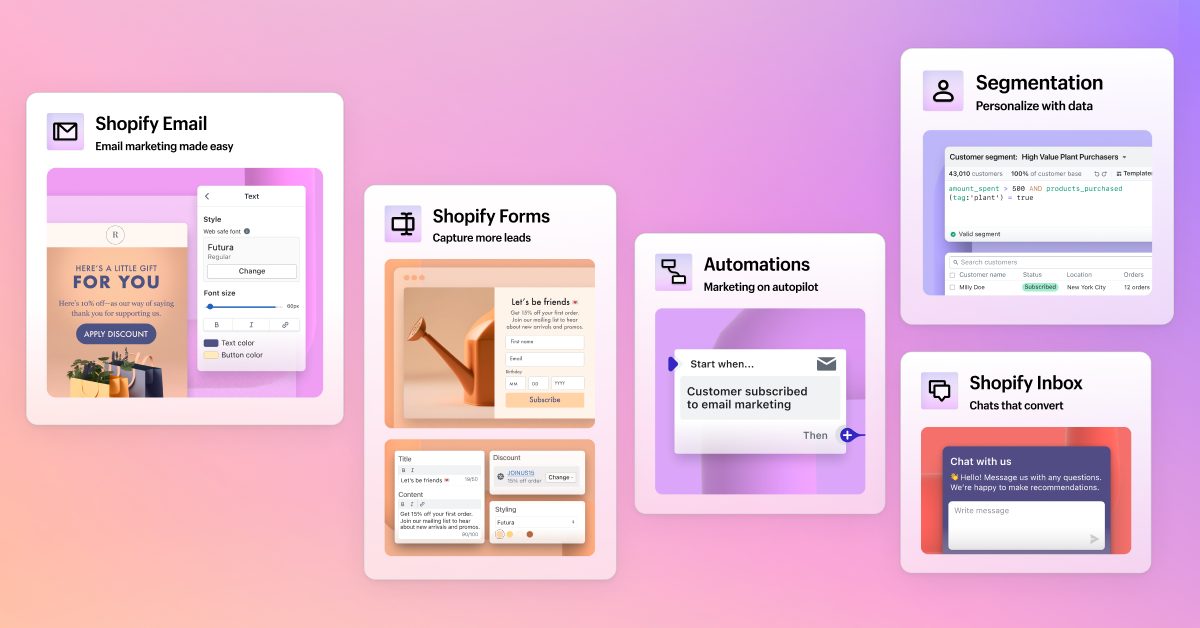
Leave a Reply
You must be logged in to post a comment.